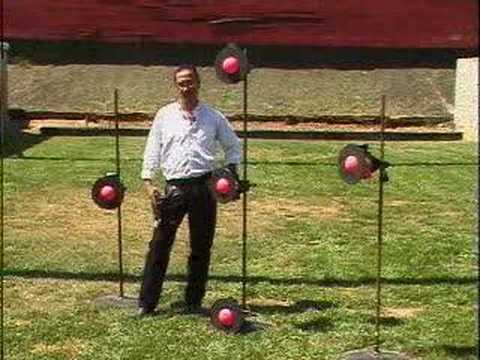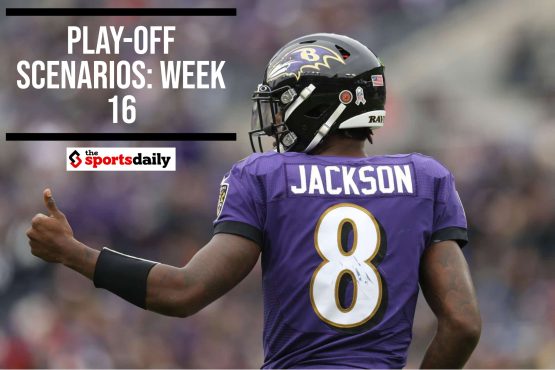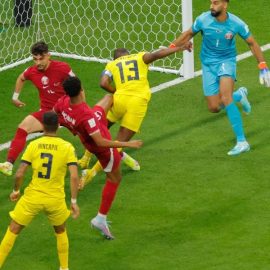I’ve used this space before for thought exercises. I’ve delved into lineup construction, contract length, and the designated hitter, among other things. Those previous topics represented tweaks in comparison to what this post recommends, as today I’d like to look at fundamentally changing the game of baseball. Before I do, however, I have to give credit where credit is due and thank Keith Law for planting the seeds for this post.
Wednesday, on my way home from work, I listened to Law on the Baseball Tonight podcast. He was talking specifically about one phenomenon: starting pitchers’ struggles in their third time through the batting order. Law argued that these demonstrated struggles should be taken into account during the playoffs, when skippers are more willing to micromanage their rotations.
Turns out, Law is right. Very right. According to a great Baseball Prospectus study, the wOBA (an all-in-one offensive metric) of batters their third trip to the the plate is 17 points higher than their first trip. It makes sense, as batters get more and more familiar with a pitcher’s stuff, which may be fading due to fatigue. Thus, it makes sense to limit hitters’ triple exposure to the same pitcher.
Law argued that in the regular season, the long-term viability of the pitching staff outweighs the benefits of consistently early substitution, but that it’s different in the playoffs when every game is so important.
But aren’t regular season games important too? I bet the Royals and Pirates would say yes–they each missed winning their division by a single game in 2014. I’d argue that if you could reorganize a pitching staff to minimize or eliminate that 17 point bump in offensive production, you could give your team a distinct advantage over the course of 162 games.
The Idea:
How could you avoid ever letting your starter face a lineup the third time through, still win games, and avoid over-scheduling your Tommy John doctor du jour?
Well, there’s actually a couple of possibilities. The first and simplest is to just carry 12 starters and split up each and every game, never letting a single guy go through an order more than twice, except for some really exceptional circumstances. I think this idea is too simplistic and fatally flawed. As we’ve seen recently, many teams struggle to find 5 passable starters. This year alone we saw 3 guys make at least 28 starts with ERA’s over 5.00. Imagine what we’d see if teams somehow had to find 12 starting pitchers, even if they only had to face lineups twice? (To do it, teams would either have to convert relievers, or promote their entire AAA staff plus 2 from AA.) It’s not going to happen; starters are simply too uncommon.
Instead, I think the answer lies in rethinking the bullpen rather than the rotation. I propose 5 starters, just like today, but instead of a traditional ‘pen, the remaining 7 guys are divided into 2 categories. Let’s take a look.
Category 1: “Middle Relievers,” though they only resemble traditional middle relievers. In this scenario, starters will only be going through the batting order twice, so we’ll need to eat some innings in the middle of the game (hence “middle” reliever, see?). Middle relievers will be 2-3 inning pitchers who will pitch about twice a week. They can’t be toss-away bullpen arms because the innings are too important. Instead, I view this as a really good role for future starters; minor league studs who aren’t ready for 2 trips through a major league lineup, but project to be in the future and can use the exposure/be useful in short bursts in the big leagues. Wouldn’t Archie Bradley have been great as a 2 inning, twice a week guy, getting his feet wet while he prepares to take on a full starter’s role next season? Mark Appel? Jon Grey? Those guys dominate in the minors, at zero major league value. Here’s a way for them to contribute earlier without compromising their development or long-term worth.
Other pitchers who would be great middle arms could be struggling starters. Maybe Ricky Romero can’t do it for 5 innings anymore, but if he knew he only had to rear back for 2, then what? AJ Burnett? Ubaldo Jimenez? Jeremy Guthrie?
What about injured players such as Masahiro Tanaka? He brought no value to his team in the middle of a playoff race throwing simulated games in Tampa, but if he could throw two innings a pop for two weeks as he worked his way back, he might have made a difference.
On worse teams, players who simply aren’t good enough to start full time but aren’t really shutdown relievers either would fill this role. I’m thinking Brandon Workman or Vance Worley. Guys who could be very valuable in short outings.
Category 2: “Shutdown Guys.” I’m eschewing the title of closer here, for obvious reasons, and instead bunching the shutdown relievers together. I’m envisioning three guys who would split up the high leverage innings and outs. These would be your typical Aroldis Chapman, Craig Kimbrel, Trevor Rosenthal types who go only one inning but dominate those three outs.
This is where you could play the matchup game. These three shutdown guys, or firemen if you’re oldschool, would be the late game guys who come in for specific batters or situations. You could have one lefty and two righties to better handle guys like Adam LaRoche or David Ortiz.
While it’s true that bullpens today carry way more than one lefty specialist, the idea here would be that you’d be able to get a lot deeper into games without seeing real trouble thanks to avoiding that tricky third time through the order. Hopefully, you’d only have to see one situation where you might play match-up ball, and that would be very late in the game.
Why it won’t work:
I hate to say it, but the plan I’ve spent the last 600 or so words hammering out will never work. It’s nowhere near flexible enough.
With only three middle relievers throwing 2-3 innings, you’d need to have those guys going every three days, compared to starters who go every five. Even at only 2 innings per outing, that’s 108 innings each. And to be able to go 2 innings an outing, you would need to give those guys the full two days’ rest, meaning you’d have to keep your middle guys in a three man rotation, you couldn’t change up the order at all.
Further, even though there might be the benefit of letting your middle relievers (who may really be starters down the road) know exactly when they are scheduled to pitch, if one of those guys was needed for a longer outing for some reason (like starter ineffectiveness), you’d mess up your middle reliever rotation by giving the guy an extra day off.
By having a middle reliever rotation, you actually limit the number of relievers on hand at any given time, and at the same time you’re asking your bullpen to absorb more total innings. Blowouts or extra-inning games might be alright, but two of them at all close together would be a disaster the effects of which would reverberate for more than a week.
My plan, unfortunately, is too rigid, too dogmatic. A good bullpen must be flexible, like a good manager, and while my idea of limiting pitchers’ opportunities against a batting order the third time through may be noble, my execution fails. This needs some more thought. That said Law is right that this pattern should be exploited more regularly at this time of year.
-Max Fankel
Add The Sports Daily to your Google News Feed!







